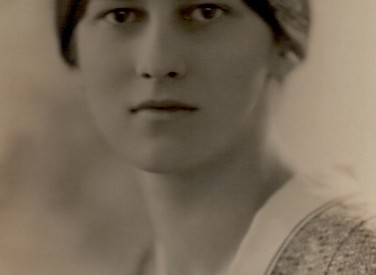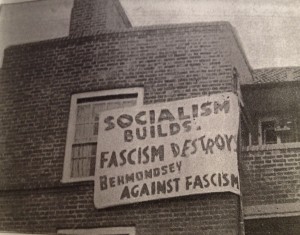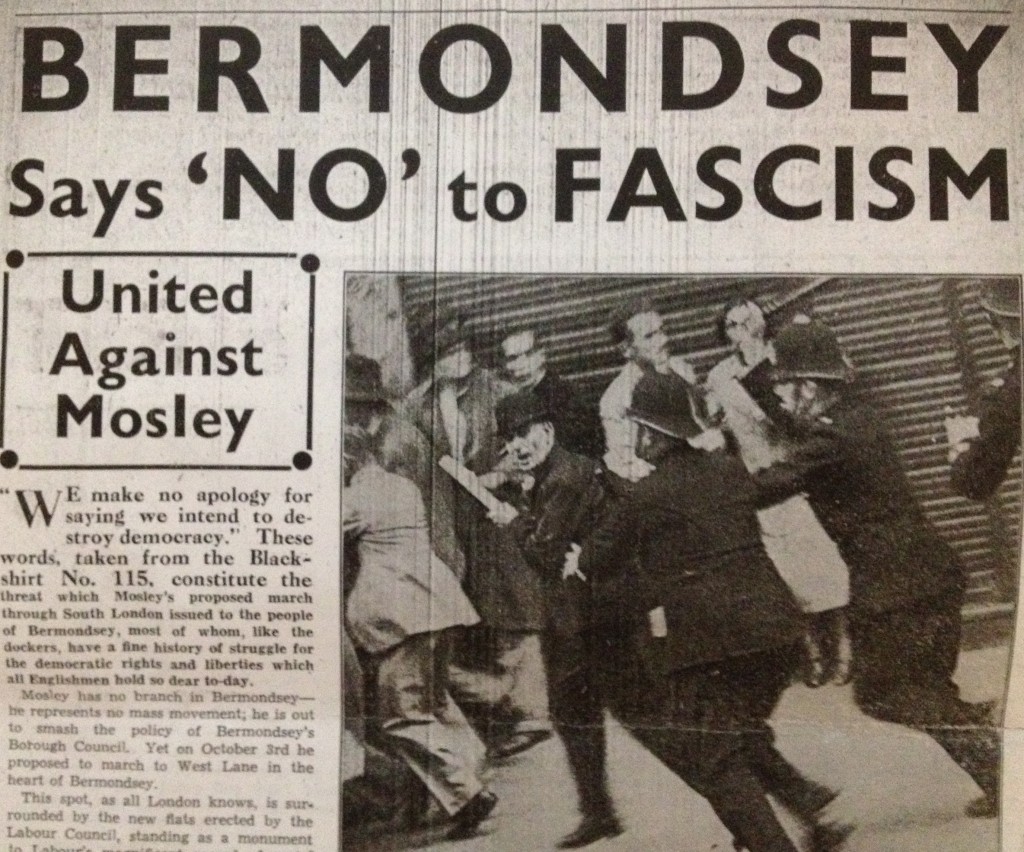The Battle of Bermondsey
5October 3, 2012 by Lydia Syson

75 years ago today my grandmother was arrested. It must have been incredibly frightening, but by then she was used to being on the frontline. Maire Lynd (later Gaster) was one of 111 people ‘knocked off’ (as my grandfather put it) at a huge anti-fascist demonstration in Bermondsey. Dockworkers, Communists, ILP members and Trades Councils got together to defeat Mosley’s Blackshirts as they tried to penetrate a Labour stronghold in the heart of London.
Accompanied by vast numbers of policemen, a column of fascists a mile long set off from Millbank to celebrate the fifth anniversary of the birth of the British Union of Fascists on October 3rd 1937. It was almost exactly a year after their famous defeat at Cable Street, after which their numbers had briefly risen, then dropped. Now their stated aim was to invade ‘areas unconquered’.
‘No Jew red mob has the power to daunt us’, proclaimed the Fascist newspaper, which also carried an advertisement for The Protocols of the Elders of Zion, a violently antisemitic hoax tract used to incite racial hatred by both Hitler and Franco.
The BUF marchers were greeted in Long Lane by barricades made of coster barrows, fencing and barbed wire, which the police demolished repeatedly. Red flags waved, a water tank was borrowed from a nearby factory, and missiles of stones, eggs, bricks and bottles were hurled. The event was reported in newspapers across the world from Montreal to Melbourne. ‘Wild scenes’ marked the day, and police on foot and horseback made repeated baton charges. Arrests and custodial sentences were even higher than they had been in the East End the year before.
It’s all thanks to a fascinating talk I went to last week by David Rosenberg (author of Battle for the East End: Jewish Responses to Fascism in the 1930s) that I’ve found out about this. In the audience of the Rotherhithe & Bermondsey Local History Society, a white-haired woman – she was nine in 1937 – remembered being rushed inside and down into the basement by her mother as the Fascists approached. As at Cable Street, the cry at Long Lane was taken straight from the streets of Madrid, still under seige in the Spanish Civil War: ‘They shall not pass’.
This was the last of the big street clashes in London before the Second World War broke out. As David explained, police control over public demonstrations intensified, and the ‘Aid Spain’ movement had become the biggest priority for Mosley’s opposition.
With few exceptions, local resistance to Fascism in 1930s Britain is something of a hidden history. I hadn’t realised before how much headway the Fascists had made in my own neighbourhood, between Camberwell and Peckham, although they were hardly unopposed.
One of the many lessons we can learn from those times is that small acts of resistance add up.
Discover more about the thousands of people who resisted Oswald Mosley and follow their Anti-Fascist Footsteps through the East End with David Rosenberg. Or take one of his many other tours through radical London, including a specially devised A World Between Us walk, ideal for book groups: visit the main East End locations in the novel and find out more about the historical background to the story. A World Between Us walks last 90 minutes and cost £6/£4 per person, with a minimum group size of 8.
Category News | Tags:



Fascinating stuff. Where did you find the newspaper clipping?
Thanks to David Rosenberg for both the clipping and the picture of the Bermondsey banner.
… [Trackback]…
[…] Read More: lydiasyson.com/the-battle-of-bermondsey/ […]…
Great to read this, my 98 year old father, Harry Balman, was on this demonstration. He was a member of the Bermondsey Labour Party Youth Wing and his father was an activist and councillor having been Mayor of Bermondsey in 1927/8. So proud of the stand they took.
Yes! Thanks so much for letting me know. And apologies for my slow reply.